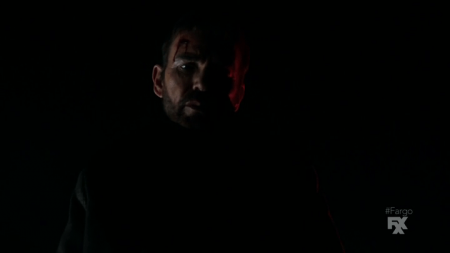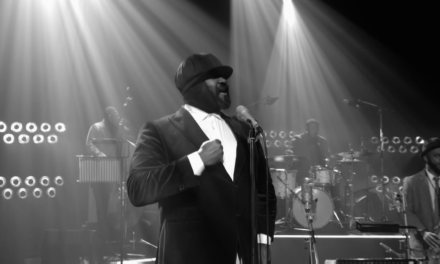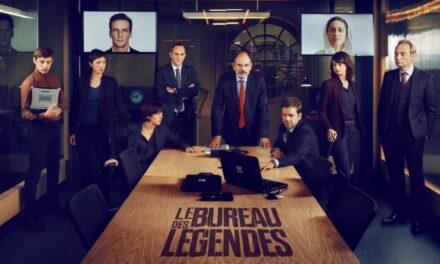This second blog offers some thoughts on how aesthetic complexity in drama has been developed for television followed by the possibility of an evaluative method for a medium (unlike film) which has been difficult to judge.
Due to its long association with cultural studies, television has been analysed primarily as a form of communication rather than as a textual system which is capable of criticism. Scholars have often pointed out that television cannot stand up to textual analysis because of the diversity of experiences felt by the audience watching television. Yet, Jason Jacobs makes the observation with film that, ‘One needs only think of the enormous range of film criticism that relies on detailed observation of the text in order to back its claims to see that this is problematic…the film scholars I admire the most…pay extraordinarily close attention to the films they discuss and yet there is no evaluative method that they share.’[i]
This observation both acknowledges and ignores the fact that film like television is too often seen as one type of thing but critical textual analysis relies on both a large-scale historical approach, as well as one that is more granulated. In the case of television, this has been contentious because its continuous availability suggests that its characteristic organisation is the flow of the broadcast (or IP) signal, and television textuality relies on its quantitative aspect. However, this aspect, which is so important to understanding television output, masks many of its deeper qualitative structures. A continuous cultural form such as television is not a ceaseless data stream, although it is an amalgam of often very heterogeneous content. Television output because of its sheer quantity juxtaposes many types of content and includes many methods of production. Since its beginning, plurality in television programming has created tensions between fixed aesthetic or technological limits to form liminal states between creativity and forms of production. For this reason, critical evaluation and judgements within television textual analysis should rely on understanding not only its ability to address a mass audience and/ or the general processes of production and consumption, but also its qualitative distinctions and how textual values have changed over time.
Unlike claims about the use of complex style in film judged to be made by an auteur, television drama in the early electronic studio has been identified with having a zero-degree style that dominated its initial existence. Golden Age dramas broadcast in the 1950s in the US by Studio One, The US Steel Hour, and Playhouse 90 were to use camera techniques that have been identified by Gary Edgerton as a functional and invisible style of realism.[ii] Moreover, the stylistics of liveness was believed to be antagonistic with the filmic tradition from Hollywood.[iii] This caused problems for directors directing live drama, who found it difficult to make the transition to directing film for television.[iv] Instead, dominant dramatic modes on television privileged drama that continued to use a naturalistic form. At the same time, within an industrialised medium like television, Stanley Cavell has argued that ‘an immediate difference presents itself between television and film [for] what is memorable, treasurable, criticisable [in television] is not primarily the individual work, but the program, the format.’[v] From the 1950s to the 1980s, it can be argued that television lacked not only the semiotic density derived from the complex style that could be found within film but also relied on its quantitative forms such as the serial which fulfilled television’s function as a live relay device from inside the studio.
Nevertheless, there was a second tendency for some types of drama to align itself with the cinema. A quality serial that embodied notions of ‘art’ and ‘significance’ such as the filmed British mini-series Jewel in the Crown (1984) and Euston Films’ adventure serial, Reilly: Ace of Spies (1983), produced the ‘look’ and ‘feel’ in drama that audiences by that time would have expected. Derek Granger, the producer of Brideshead Revisited (1981) agreed: ‘[Film] provides us with a depth of feeling, the realness that we are seeking. It has a feather-like quality that video doesn’t have…Aesthetically, video is a coarse medium, very suitable for some types of production but totally inappropriate for this one.’ In these comments there is an implicit hierarchy of mediums on television and an argument for the ascendancy of film.
Equally, interest in the miniseries in the US had started because of the decision from Paul Klein at NBC in 1976 to combine the values of the made-for-TV movie with the seriousness of long-form series television. The TV movie pre-dated the miniseries and had been prompted by the need to replace a diminishing reserve of feature films that had been released to television by Hollywood. One of the first TV movies was an adaptation of Hemingway’s short story, The Killers (1964), which because of its inclusion of too much violence was released to the cinema instead. However, the long-term form combined with the slick imagery of the TV movie destabilised the status quo when it broke barriers twenty years later to include more controversial ‘adult’ subjects in such dramas as The Thorn Birds (1983).
Consequently, for the television theorist searching for signs of authorship, rather than allowing for a system of télévision d’auteurs, an alternative relies on television’s original unstable taxonomy and desire for stability, which should be subjected to textual criticism. Crucially, contemporary categories of complex television serial drama from Netflix, Amazon and HBO ‒ including the vexed question of whether TV drama has become cinematic[vi] ‒ are cultural forms that can be mapped within periods of regulatory stability encompassing both its operations and programmes. At the same time, periods of stabilisation and the placing side-by-side of different styles and types of narrative – some that achieve temporary ascendency before being replaced by others ⎼ can be argued to be, in fact, the perquisite to many of the exchanges that have shaped dramatic forms that have emerged on contemporary US and British television.
An aesthetic approach focuses on how the construction of meaning relies on such methods as the use of the shot and tone and texture, which establishes the locus of engagement and value within the series. But for what is essentially a diachronic approach, the discussion of ‘creativity’ (unlimited choice/ formal negotiation) rather than a fixed ‘authorship’ (unique vision/authentic expression) in the contemporary drama suggests both the distinctive features of each programme, as well as noticing industrial and critical tensions in the shows. Such a comparative analysis between different shows broadens our understanding of the dynamic cultural status of TV drama, and makes possible evaluative methods for making critical judgments about style.
This is especially true when attempting to assess the value of what we might regard ‘richer texts’ within the medium and the desire by multiple producers to create new categories of US contemporary drama in The Young Pope (Sky Atlantic), Stranger Things (Netflix) Mars (National Geographic), Fargo (FX), Haven (Syfy) and The Man in the High Castle (Amazon). In the case of such drama, the long-form dramatic structure, which had in the case of The Thorn Birds and similar shows been melodrama, can be seen not to be necessarily antithetical. Instead, a comparison offers the possibility of a circulation of ideas to do with popular culture, genre fiction, as well as other forms, which are predicted on television’s cultural significance as a creative medium. In this way, evaluation of style renews the debate about contemporary Televisuality.
Max Sexton is a lecturer at the University of Surrey and independent scholar, where he currently teaches television and film theory. He is interested in the links between aesthetics and narrative, particularly in how they can be used to de-stabilize genre and produce ‘playful encounters’ in television drama and film. His last book Secular Magic and the Moving Image includes debates about play and aesthetics in TV shows that feature conjuring, escapology, and similar wondrous acts.
Footnotes:
[i] Jason Jacobs, ‘Issues of Judgment and Value’, International Journal of Cultural Studies, 4,4 (December 2001), 427-447.
[ii] Gary Edgerton, ‘The American Made-for-TV Movie’, in Brian G. Rose, TV Genres (Westport, Conn: Greenwood Press, 1985), 165.
[iii] William Boddy, Fifties Television: The Industry and its Critics (Chicago: University of Illinois, 1993), 74.
[iv] Richard Levinson and William Link, Off-camera: conversations with the makers of prime-time television (New York: New American Library, 1986), 180. An interesting account of the different skillsets required for directing television in the studio using multiple cameras or shooting on single camera, and the apparent impossibility of a studio television director also directing a filmed drama for television.
[v] Stanley Cavell, ‘The Fact of Television’ in Themes Out of School: Effects and Causes (San Francisco: North Point Press, 1984), 239, 242.
[vi] A topic looked at in the first blog.






